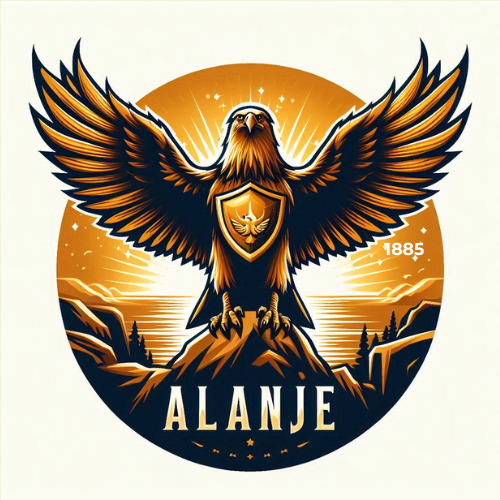
The Unique Features of OLSP: A Comparison with Traditional MMOL Systems
In the realm of e-learning, the landscape has evolved significantly, giving rise to innovative platforms that cater to diverse learning needs. One such platform, the One Lead System Pixel from Wayne Crowe (OLSP), has emerged as a powerful tool for educators and learners alike. To fully appreciate the unique features of OLSP, it’s essential to compare it with traditional Massive Multiplayer Online Learning (MMOL) systems.
Check out our OLSP review site here: https://olsprockswithalanje.com
Introduction to OLSP and Traditional MMOL Systems
Defining OLSP
OLSPs are interactive platforms designed to provide a personalized and engaging learning experience. They often incorporate elements of simulation, gaming, and social interaction to enhance learning outcomes.
Overview of Traditional MMOL Systems
Traditional MMOL systems were initially developed for entertainment purposes, allowing players to interact with each other in virtual worlds. While they can offer collaborative learning opportunities, their primary focus is on entertainment rather than education.
Check out our OLSP review site here: https://olsprockswithalanje.com
The Significance of Understanding the Differences
Understanding the distinctions between OLSP and traditional MMOL systems is crucial for educators and learners. It helps identify the most suitable platform for specific educational goals and ensures that the chosen system provides the necessary features and benefits.
Unique Features of OLSP: A Deep Dive
- Adaptive Learning Technology: OLSPs often employ adaptive learning algorithms to tailor content and pacing to individual learners’ needs and abilities.
- Real-time Feedback and Data Analytics: OLSPs provide immediate feedback and track learner progress, allowing educators to identify areas for improvement and adjust their teaching strategies accordingly.
- Immersive Simulations and Virtual Environments: OLSPs can create highly immersive simulations that replicate real-world scenarios, providing learners with hands-on experience and practical skills.
- Personalized Learning Experiences: OLSPs can adapt to different learning styles and preferences, ensuring that each learner receives a customized and engaging experience.
- Gamification Elements: Many OLSPs incorporate gamification elements, such as points, badges, and leaderboards, to motivate learners and foster a competitive spirit.
- Collaborative Learning and Peer Interaction: OLSPs often facilitate collaborative learning opportunities, allowing learners to work together, share ideas, and learn from each other.
Check out our OLSP review site here: https://olsprockswithalanje.com
Comparative Analysis: OLSP vs. Traditional MMOL Systems
FeatureOLSPTraditional MMOLFlexibility and AccessibilityHighly flexible and accessible from various devicesMay have limitations in terms of accessibility and device compatibilityEngagement and MotivationOften more engaging and motivating due to personalized learning and gamificationCan be engaging, but may lack the same level of personalizationEffectiveness and Learning OutcomesProven to be highly effective in improving learning outcomesCan be effective, but may not always focus on specific educational goalsCost and Resource AllocationCan be cost-effective, especially when compared to traditional classroom instructionCan be expensive to develop and maintainUser Experience and Interface DesignTypically designed with a focus on user experience and ease of useMay prioritize entertainment over educational objectivesScalability and Technological InfrastructureHighly scalable and can accommodate large numbers of learnersMay face scalability challenges, especially for large-scale implementations.
Check out our OLSP review site here: https://olsprockswithalanje.com
Implications for the Future of E-learning
The unique features of OLSPs have significant implications for the future of e-learning. They offer a more personalized, engaging, and effective learning experience compared to traditional methods. As technology continues to advance, we can expect OLSPs to play an even more prominent role in education.
Strategic Recommendations for Adoption
- Identify Educational Goals: Determine the specific learning outcomes you want to achieve and select an OLSP that aligns with those goals.
- Evaluate Platform Features: Carefully assess the features offered by different OLSPs to ensure they meet your needs.
- Consider Integration with Existing Systems: Ensure that the chosen OLSP can be integrated with your existing learning management system or other educational tools.
- Provide Adequate Training: Offer training and support to educators and learners to ensure they can effectively utilize the OLSP platform.
- Continuously Evaluate and Improve: Regularly assess the effectiveness of your OLSP implementation and make necessary adjustments to optimize learning outcomes.
Check out our OLSP review site here: https://olsprockswithalanje.com
By understanding the unique features of OLSP and carefully considering the factors outlined in this comparison, educators and institutions can make informed decisions about adopting this innovative technology to enhance their learning experiences.
If you would like to sign up for OLSP using our affiliate link click HERE.

+ There are no comments
Add yours